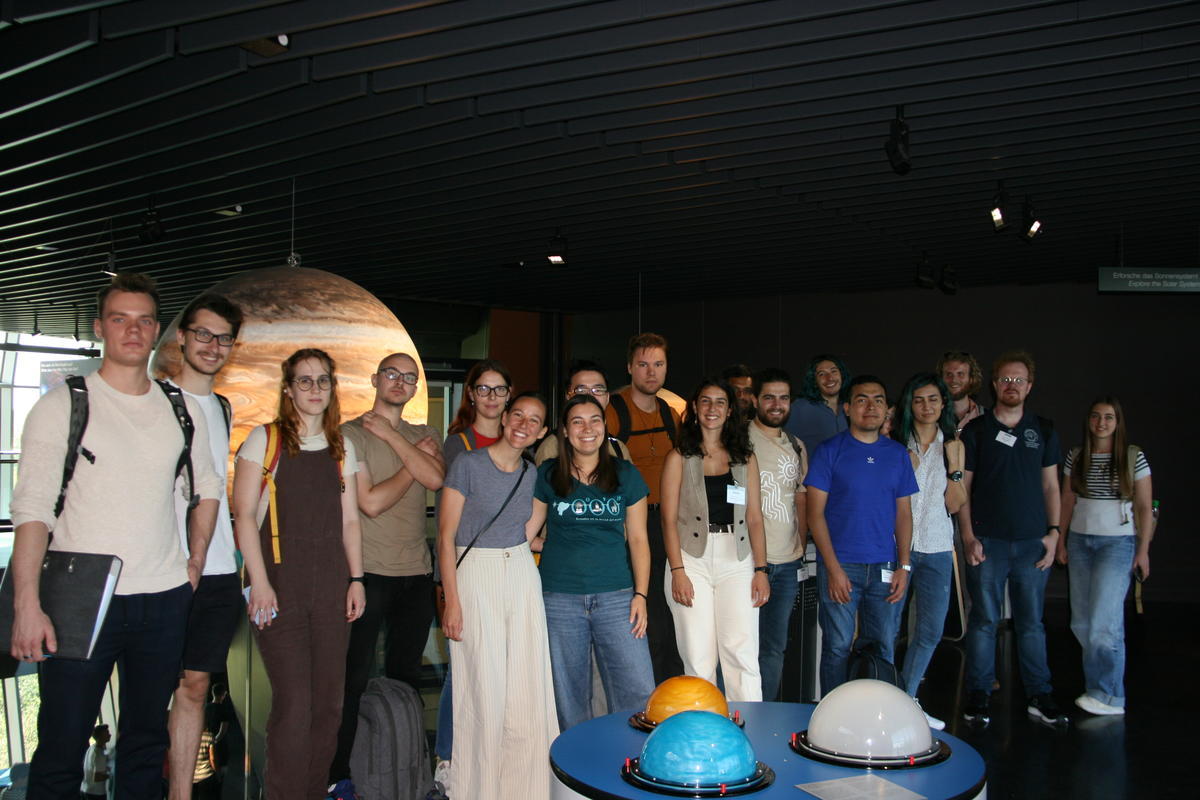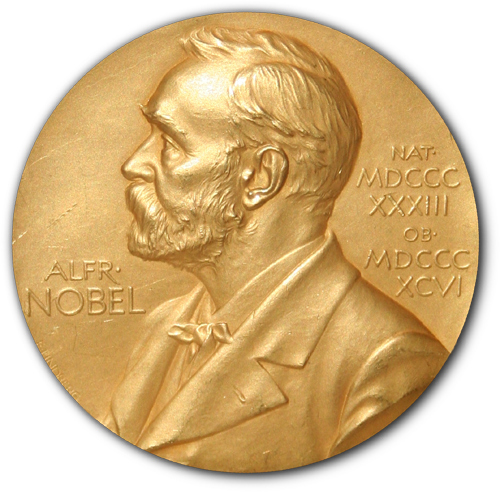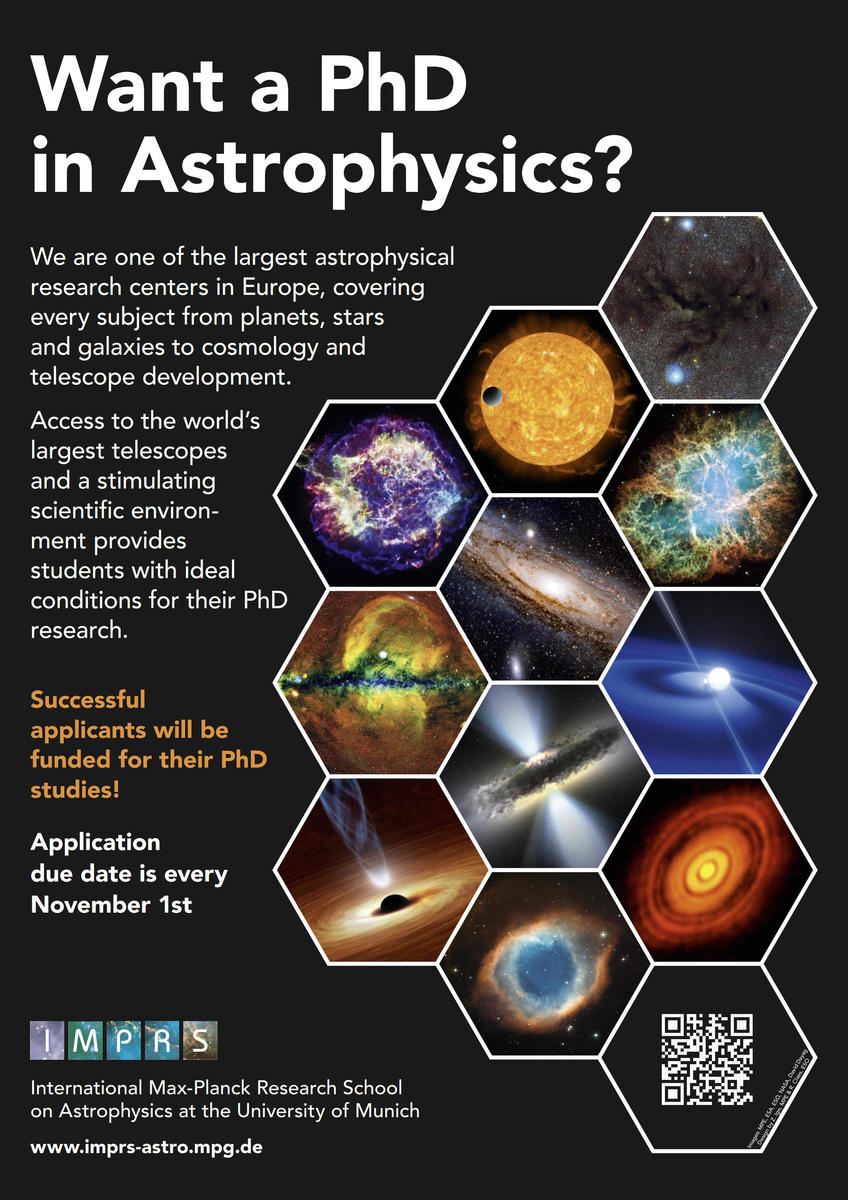Advanced Course I
Observational Astrophysics - Part 1
Optical to Radio Wavelength Range
By Prof. Dr. Reinhard Genzel (MPE)
Lecture 1. Radiation
introduction of key terms, effects of the Earth's atmosphere, basic methods to detect radiation, fundamental limits of detection, a breeze through modern detectorsLecture 2. Telescopes
geometric and wave optics, interference and diffraction, radio antennae, optical/IR telescopesLecture 3. Spectroscopy and more
heterodyne spectroscopy: correlators and all, gratings, Fabry-Perots, Fourier Transform spectroscopy, energy resolving detectors, making a real measurementLecture 4. High Resolution Imaging
beating the atmosphere: adaptive optics, radio interferometry, optical/IR interferometryObservational Astrophysics - Part 2
Extreme UV to Gamma Ray Range
By Priv. Doz. Dr. R. Diehl (MPE)
Lecture 1. Multiwavelength Astrophysics
the EM spectrum revisited, Transmission of the Atmosphere, The Sky in different Wavebands, Basic High-Energy Radiation MechanismsLecture 2. High-Energy Imaging Methods
Early Geometric Imaging Methods, Grazing Incidence X-ray mirrors, Gamma Ray Imaging Techniques, Photon detection statistics (Poisson)Lecture 3. High-Energy Detectors and Spectroscopy
Proportional counters, X-ray CCDs, Cryogenic Bolometers, Transmission and Reflection GratingsLecture 4. Archival Computer Astronomy
Preprint Servers: ADS, astro-ph, Catalogue and Image: NED, SIMBAD, SKYVIEW Data Archives: HST, HEASARC, ROSAT, ISO etc., First online stepsStellar Structure - Part 1
Structure and Evolution of Single Stars
By Priv. Doz. Dr. habil. Achim Weiss
observational basics, structure equations, simple models, microphysics:, equation of state, opacities, energy generation and chemical evolution, mixing processes, neutrino emission, solutions (numerical methods), connections to cosmology and extra-galactic astrophysis, the solar interior,overview over stellar evolution in three different, mass range (basic features, special events, special aspects, observational counterparts), low-mass stars (ZAMS, RGB, helium flash, Li, GC, ...), intermediate-mass stars (AGB, thermal pulses, dust winds, s-process ...), massive stars (mass loss, overshooting, advanced nuclear burning, ...), nucleosynthesis in stars, peculiar and variable stars, final objects
Stellar Structure - Part 2
Radiative transfer and stellar atmospheres
By Priv. Doz. Dr. habil. Joachim Puls
Interstellar properties, the radiation field: specific and mean intensity, radiative flux and pressure, Planck function
Coupling with matter: opacity, emissivity and the equation of radiative transfer (incl. angular moments)
Radiative transfer: simple solutions, spectral lines and limb darkening
Stellar atmospheres: basic assumptions, hydrostatic, radiative and local thermodynamic equilibrium, temperature stratification and convection
Microscopic theory, opacities and emissivities, line transitions: Einstein-coefficients and line-broadening ,continous processes and scattering, atomic level population ionization and excitation in LTE: Saha- and Boltzmann-equation, non-LTE: motivation and introduction
Stellar winds: brief introduction into pressure and radiation driven winds
Quantitative spectroscopy: stellar and atmospheric parameters and how to determine them, for the exemplaric case of hot stars





